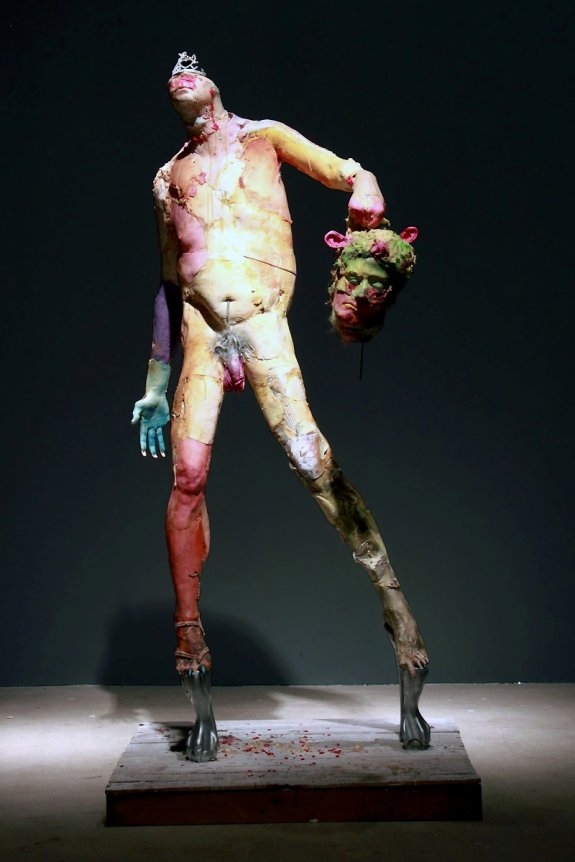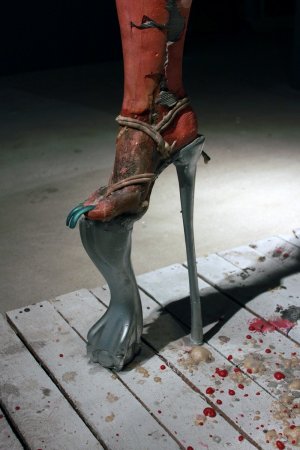 An Interview with Magnus Sodamin
An Interview with Magnus Sodamin
 Interview with Rebeca Raney
Interview with Rebeca Raney
What defines the art of Andrew Nigon?
Chaos. Incompletion. Temper Tantrums. Christianity. Drag Queens. Circus Side Shows. The Color Pink.
Please share some of your artistic journey with us
While in undergraduate school I began working with clay. I liked the ability to directly affect a material with my hands and not be dependent on tools to manipulate form. I also began molding doll parts that I would assemble to quickly create human figures that would be deconstructed and reassembled. It was in grad school when someone suggested that, if I was interested in working with the human form, I should consider increasing my scale to life-size. Clay no longer seemed practical at this scale so I switched to expandable foam and plastic, but the process never changed. Since then I have continued an exploration of new materials or at least used familiar materials in new ways.
Tell us a bit more about your material experimentations
Experimentation is a way to keep myself on my toes. Once I understand a material I’m able to control it and control is something I aggressively avoid. In the studio, I maintain a process that is purposefully uncomfortable in order to set myself up for mistakes. The trick is to always be a novice with whatever material I am using.
What themes do you explore in your art?
I am trying to come to terms with chaos and unpredictability by finding an aesthetic that celebrates the volatility of the human experience. The further along I go the more I am convinced that God lives within madness instead of being an outside observer. Much of the work has a fractured look to it even in its completed state. This creates a visual situation where it is hard to tell if the piece is unfinished or just falling apart.
You are interested in gender, anthropology and religion. Can you elaborate on what fascinates you about those subjects?
To be more specific, I am interested in exploring various techniques to anthropomorphize the potential necessity for a religious experience. Without specifying any particular faith, I glean specific techniques used in ceremony and iconography that has the power to project divine sensations. More recently my work is focusing, in small part, on the mysterious power of Drag.
You have used casts of your own limbs for sculptures. Does this practice give you a closer connection with your work? Do you feel part of the final piece in a different way when you use yourself as a model?
I feel closeness to all my work and I don’t play favorites with the ones that look like me. What is weird is other people’s reaction to those particular pieces. A lot of people see them as self-portraits, which they are not. I think of them more as me’s in Halloween Costumes. Yes we look alike, but they are pretending to be someone/something else and there is a separation in that.
What is your balloon series “Knew Normal” about?
It’s the morning after. It’s about hangover and the heaviness of awkward regret. “Knew Normal” is an ongoing series that I have been exploring for a few years now. I started out filling balloons with expandable foam and tying them off. For the first day the foam expands, growing the balloon, but then, right before the foam sets, it shrinks slightly. This makes the latex wrinkle a little and the balloons start to look like old skin. There is a sadness to them when they hang in large groups but they are beautiful and peaceful as well. All good things come to an end, but the good news is that all bad things come to an end as well. Normal only exists in the past.
What else are you currently working on?
An eighteen-foot tall giraffe that is a companion piece to a life-sized elephant I made in 2010.


 Heike Dempster
Heike Dempster